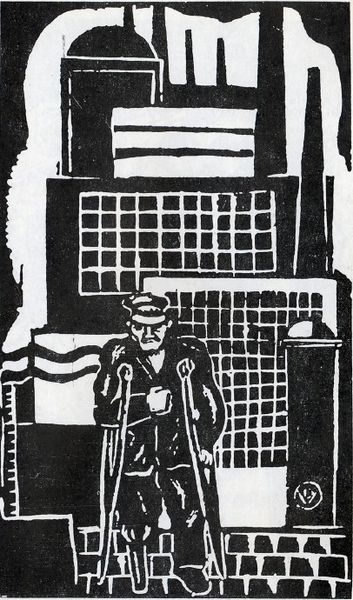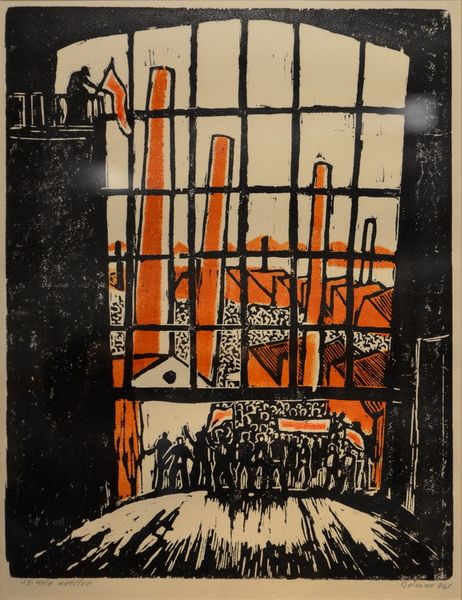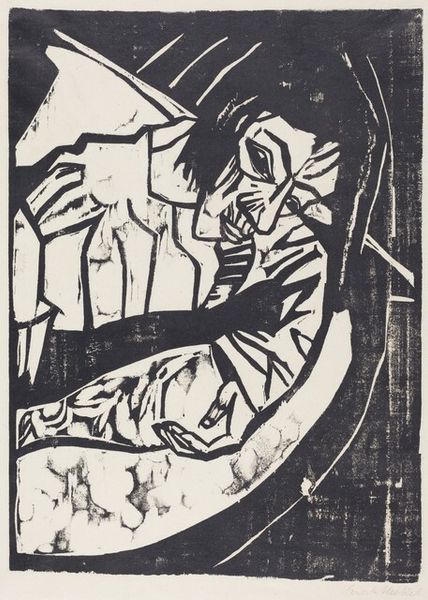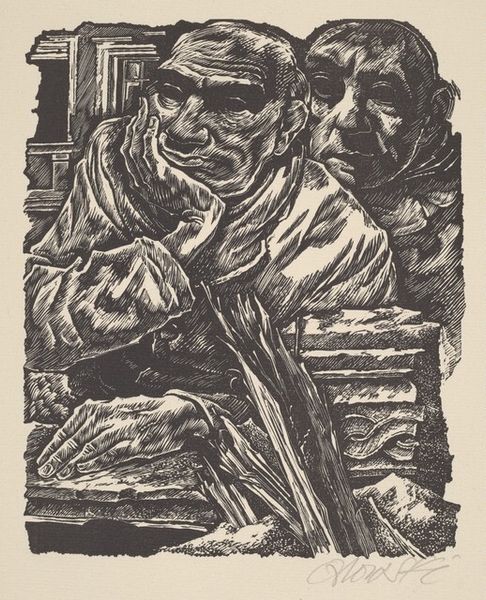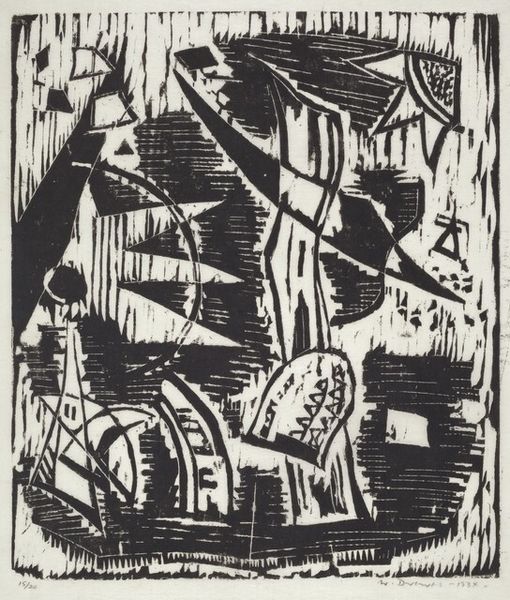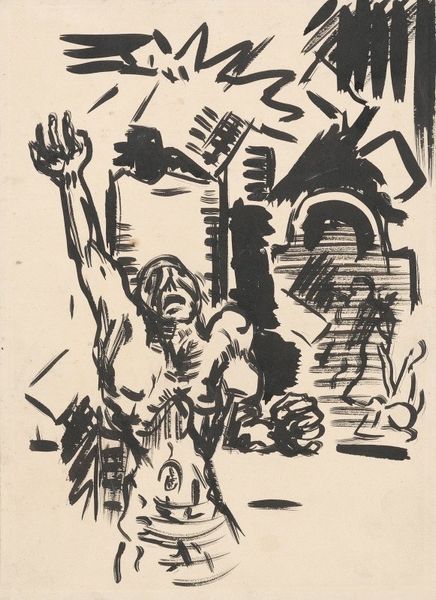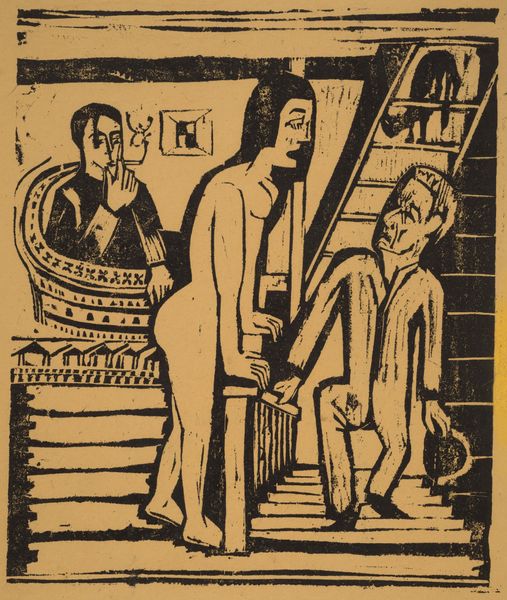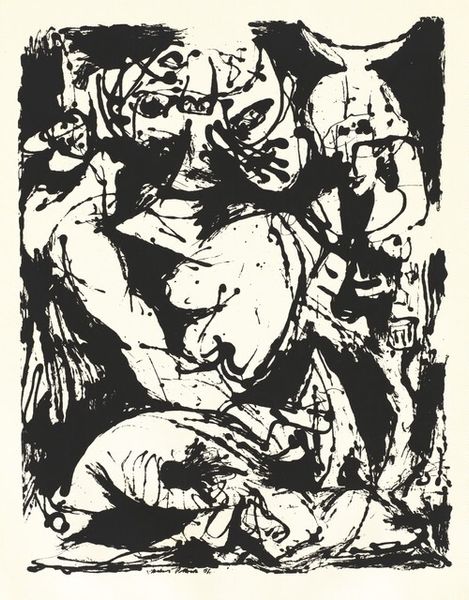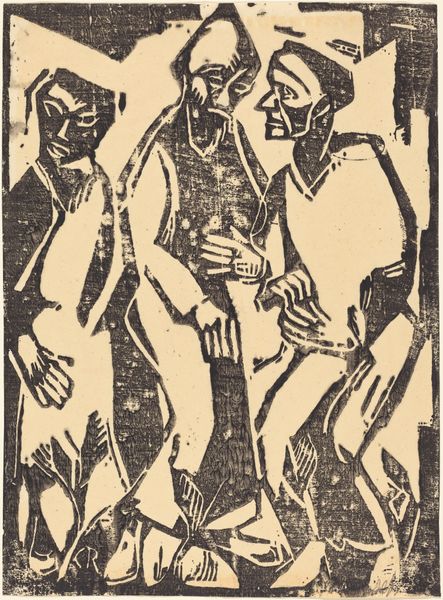
print, linocut
#
portrait
# print
#
linocut
#
german-expressionism
#
junji ito style
#
figuration
#
linocut print
#
expressionism
Dimensions: image: 60.3 x 46 cm (23 3/4 x 18 1/8 in.) sheet: 60.3 x 46 cm (23 3/4 x 18 1/8 in.)
Copyright: National Gallery of Art: CC0 1.0
Editor: Christian Rohlfs' "The Prisoner," a linocut from 1918... It’s heavy, dark. The rough-hewn lines almost scream off the paper. What strikes me is the raw emotion, like a howl trapped in ink. How do you interpret such a visceral piece? Curator: Visceral is spot on! I imagine Rohlfs staring intensely, willing the story from the block itself. The starkness amplifies the figure's anguish, doesn't it? Look at the barred lines; they’re more than just prison bars, aren’t they? They're slashing, trapping marks that speak to a deeper confinement, almost… existential. Perhaps it reflects the anxieties of post-war Germany, wouldn't you agree? What do you make of his gaze? Editor: It's wild. It feels like defiance, terror, maybe even a glimmer of madness. It's not passive at all. But if those bars are more than just literal, where does that take us? Curator: It shatters the picture plane, it is almost daring the viewer to engage with the very real distress of isolation – isolation imposed by war, trauma, society, or even self. I’m fascinated by Rohlfs' ability to convey that with such elemental technique. Editor: It definitely hits harder knowing it was made in 1918. It makes you wonder what specific experience, personal or observed, fueled this… outburst? Curator: Indeed. The linocut’s very nature – bold cuts, uncompromising lines – serves the urgency of expression so brilliantly. What have you found most compelling? Editor: The ambiguity. Is he broken or unbroken? That tension makes the image burn itself into your mind. Thanks, I'm really looking forward to researching Rohlfs in depth this semester. Curator: Precisely! The questions are more vital than any answers offered. It sounds as though that internal burning that we can both imagine and recognize so readily, it gives meaning and motivation. That is art’s truest function!
Comments
No comments
Be the first to comment and join the conversation on the ultimate creative platform.

